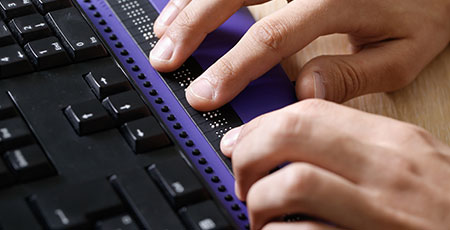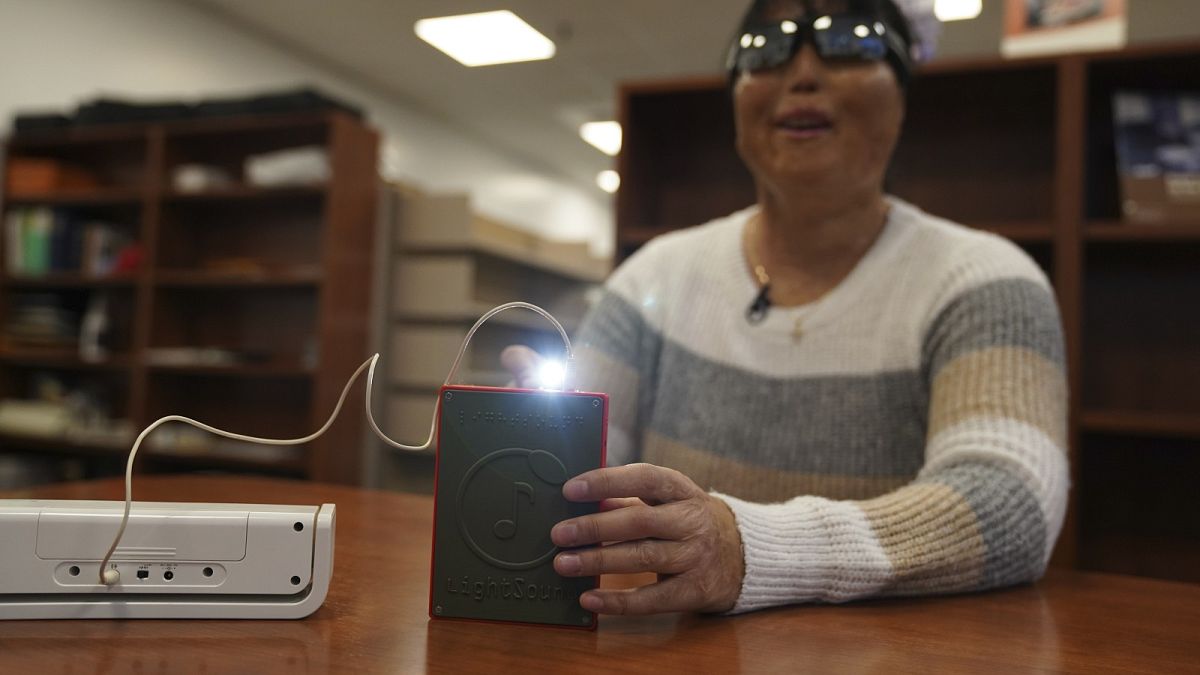Assistive Technology for the Blind: Innovations to Transform Lives
Assistive Technology for the Blind: Innovations to Transform Lives
Blog Article
Discover Cutting-edge Tools Created for the Aesthetically Damaged
The growth of cutting-edge tools for the visually damaged stands for a substantial innovation in accessibility and freedom. Technologies such as clever glasses with AI capacities and mobile applications developed to offer acoustic descriptions are reshaping everyday experiences for users.
Smart Glasses for Navigating

Smart glasses created for navigation are changing the means visually damaged individuals interact with their atmosphere. These advanced gadgets utilize a combination of electronic camera modern technology, artificial knowledge, and auditory comments to give real-time details regarding environments. By utilizing barrier detection systems, smart glasses can notify customers to potential threats, making it possible for safer movement in both unknown and acquainted setups.
The integration of GPS technology further boosts navigating capabilities, allowing users to get acoustic directions as they move. This hands-free strategy not only promotes freedom however also equips aesthetically impaired people to browse metropolitan landscapes with raised self-confidence. Furthermore, numerous clever glasses are outfitted with attributes that recognize sites and street indications, giving contextual information that enhances the user experience.
In addition, the advancement of these tools is continuously progressing, with business working to improve the precision of object recognition and expand the array of navigational features. As smart glasses come to be more economical and accessible, they hold the potential to significantly transform day-to-day live for aesthetically damaged customers. Eventually, these ingenious devices represent a crucial step towards inclusivity, offering improved movement and a higher sense of freedom for individuals browsing the world around them.

Mobile Application for Daily Living
Just how can mobile applications enhance the everyday lives of aesthetically impaired individuals? Mobile applications are transforming the means aesthetically damaged customers browse their atmospheres, manage day-to-day tasks, and gain access to info. These applications supply crucial support via various functionalities, fostering self-reliance and improving lifestyle.
Several innovative mobile apps are designed especially for everyday living. As an example, apps like Be My Eyes attach aesthetically damaged individuals with sighted volunteers by means of video calls, permitting them to get real-time support with jobs such as reviewing labels or navigating strange areas. Similarly, Seeing AI, established by Microsoft, utilizes expert system to define environments, read text, and recognize items, efficiently changing a smartphone into a powerful device for everyday support.
Additionally, navigation applications customized for the visually damaged, such as Aira and BlindSquare, offer audio-based instructions and ecological details, allowing customers to traverse their surroundings safely and with confidence. Beyond navigating and immediate assistance, mobile apps likewise support company and job management, with functions that help users set reminders, produce order of business, and track visits. In recap, mobile applications act as vital resources, empowering aesthetically impaired individuals to lead more independent and satisfying lives.
Wearable Technologies for Assistance
Empowerment with innovation is significantly evident in the world of wearable tools designed to help visually impaired individuals. These cutting-edge tools integrate perfectly into day-to-day live, boosting navigation and offering necessary comments to customers. Wise glasses equipped with video cameras can identify faces and review text out loud, enabling users to interact even more confidently in expert and social settings.
An additional significant development is the usage of haptic feedback systems in wearable devices. These systems use vibrations or other responsive signals to share information about the individual's environment, such as challenges or modifications in terrain, boosting flexibility and security. Wearable technologies additionally include wristbands that connect to mobile phones, informing customers to notifications through refined vibrations, therefore enhancing connectivity without dependence on aesthetic cues.
As these modern technologies proceed to advance, they are not only boosting independence for visually damaged individuals yet likewise promoting a greater sense of inclusion in society. By linking the void in between challenges faced in everyday living and the potential for autonomy, wearable innovations function as crucial tools in why not find out more the pursuit for equal rights and empowerment for those with visual problems.
Sound Summary Tools
Audio description devices play a crucial function in improving ease of access for aesthetically impaired individuals, offering them with the capability to engage with aesthetic navigate to this website media. Wearable technology for low vision. These tools use narrated summaries of vital visual elements in films, tv shows, and live performances, making sure that customers can totally understand the context and feelings conveyed via visuals
Sound summary can be integrated right into numerous platforms, consisting of streaming services, cinema screenings, and live theater. Numerous prominent streaming solutions currently consist of audio description as an ease of access feature, allowing customers to select it easily. In addition to mainstream media, specialized apps additionally exist, providing audio descriptions for art exhibitions, museums, and other social events.
The performance of audio description pivots on the skill of the storytellers, that need to convey visual details succinctly without taking away from the original sound. Technologies in this area are also leading the way for more personalized experiences, where users can readjust the level of information and pacing according to their choices.
Braille Innovations and Gadgets
Braille developments and tools have dramatically transformed the means aesthetically impaired people engage with message and information. Modern advancements have actually led to the growth of functional devices that improve literacy and freedom amongst individuals.
Additionally, portable Braille notetakers integrate traditional Braille input with modern-day functionalities, promoting note-taking, scheduling, and record editing on the move. Voice-activated assistive devices. These small gadgets often feature text-to-speech abilities, linking the void between Braille and acoustic details
Furthermore, innovative Braille printers have actually emerged, allowing individuals to produce Braille tags, files, and educational products effectively. This accessibility cultivates greater engagement in specialist and educational settings, eventually promoting inclusivity.
Furthermore, research study right into clever Braille technologies continues to increase. Tools that incorporate artificial knowledge are being checked out to give real-time navigating help and contextual details, enhancing official source the user experience in diverse setups. In general, these technologies show a dedication to encouraging aesthetically damaged individuals via modern technology, ensuring they can quickly access and involve with the globe around them.

Conclusion
The improvement of cutting-edge tools for the aesthetically damaged substantially enhances independence and high quality of life. These modern technologies not just foster better incorporation but also advertise autonomy in daily activities, inevitably adding to a more accessible and fair society for aesthetically damaged people.
As wise glasses become a lot more available and affordable, they hold the potential to significantly transform day-to-day life for visually damaged customers. Mobile apps are revolutionizing the method aesthetically damaged customers navigate their environments, handle everyday tasks, and gain access to info. Apps like Be My Eyes link visually damaged users with sighted volunteers by means of video clip telephone calls, enabling them to obtain real-time help with jobs such as checking out tags or navigating strange spaces.Furthermore, navigating applications tailored for the aesthetically damaged, such as Aira and BlindSquare, offer audio-based instructions and ecological information, making it possible for users to traverse their environments safely and confidently.The innovation of innovative devices for the aesthetically damaged dramatically improves self-reliance and quality of life.
Report this page